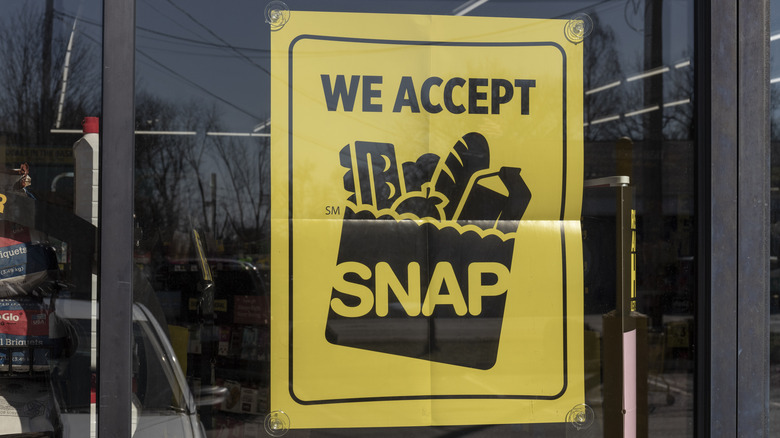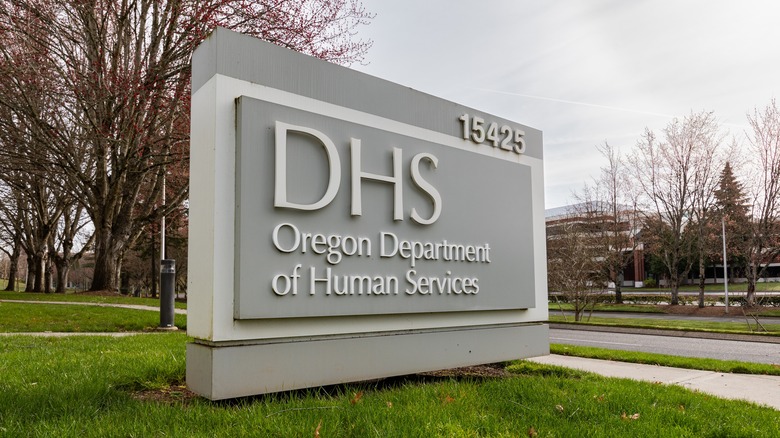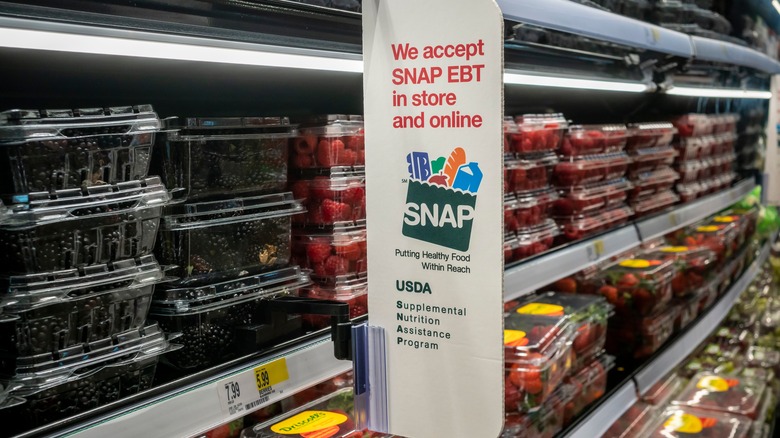This US State Is Cutting SNAP Benefits And Thousands Will Be Affected
People in America are about to get hungrier, starting in the state of Oregon. More than 40 million Americans count on monthly food assistance from the Supplemental Nutrition Assistance Program (SNAP), which was once known as the Food Stamp Program. However, the narrow passage of President Trump's "Big Beautiful Bill" means SNAP benefits will be slashed for millions. Currently, one in six Oregonians count on SNAP. The average SNAP benefit amounts to $313 per month for households and $183 per month for individual beneficiaries. The average American spends $500 per month on their grocery bill.
Oregon State has already started to notify current benefit recipients about cuts to the program, as well as major changes on how benefits can be accessed and maintained. Nowadays, many frugal people pack their own work lunch; others strategize on grocery shopping, while some only cook food rather than waste money on takeout. But the changes to SNAP benefits in Oregon (and other states) aren't about better balancing a budget. These changes can impact food insecurity for millions of Americans, especially as grocery prices continue to rise.
SNAP changes will impact 757,000 Oregonians who count on SNAP, or about 18% of the state's population. More than 50% of impacted SNAP households are in families with children, per data compiled by the Center on Budget and Policy Priorities. Changes to Oregon's SNAP benefits will be made in phases, coming fully into force by the end of 2026.
How is SNAP changing in 2025 and 2026?
While many changes to SNAP benefits will take place over 2026, some have already been communicated to beneficiaries. In early October 2025, adults in Multnomah, Washington, Clackamas, Yamhill, Benton, and Hood River counties were told they must meet new work requirements to receive SNAP benefits.
Able-bodied adults without dependents must work or volunteer for at least 80 hours a month in order to receive benefits. If such an adult can't prove they've committed to that minimum, they can only receive three months of SNAP assistance over a period of three years. Some exemptions apply, including for pregnant women, those with children younger than 14, and those who cannot work due to physical or mental conditions. Before the passage of the "Big Beautiful Bill," children were considered those under 18 years old, but this has been changed to 14. The legislation has also raised the ages of working adults from 55 years old to 65.
This expansion of work requirements for benefits affects all of Oregon's 36 counties. There is a rule in the new law that says counties with unemployment rates higher than 10% can waive work requirements, although this doesn't currently apply to any Oregonian county. By the end of 2025, work requirements will be mandated in most counties that have previously been able to waive them for SNAP benefits. Some Oregon tribal lands may qualify for the exemption, including the Burns Paiute Tribe, Cow Creek Band of the Umpqua Tribe, Klamath Tribes and Confederated Tribes of Siletz Indians. Those caring for elderly or disabled people may struggle the most from these new work requirements.
Who else will be affected by SNAP changes?
Trump's "Big Beautiful Bill" has also removed exemptions from homeless people, veterans, and former foster youth when it comes to SNAP benefits. Asylum seekers and refugees are also banned from receiving any SNAP benefits, including refugee children. There are around 3,000 asylum seekers in Oregon. Additionally, the "Big Beautiful Bill" legislation removes SNAP eligibility from battered spouses and children, victims and family members of severe trafficking, parolees, and those with special granted immigrant status.
These changes came into effect immediately for new SNAP applicants, and they will phase in over the next few months for enrolled beneficiaries. SNAP beneficiaries who receive utility assistance for energy bills will see benefits cut, too. This means 29,000 household will lose benefits to the tune of $58 on average. Now, households automatically qualify for SNAP and utility benefits only if they include a disabled individual aged 60 years or older.
Both Oregon's governor and food bank area president have spoken out against the changes, as have others. Food and job scarcity are already issues in Oregon, and these issues will hit harder as more Oregonians rely on strained food banks during SNAP benefit cuts. In a statement condemning the measures, Governor Tina Kotek said: "When you cut SNAP, you're not cutting bureaucracy, you're cutting a child's dinner."


